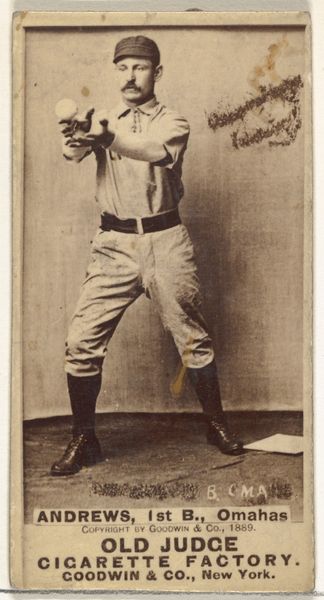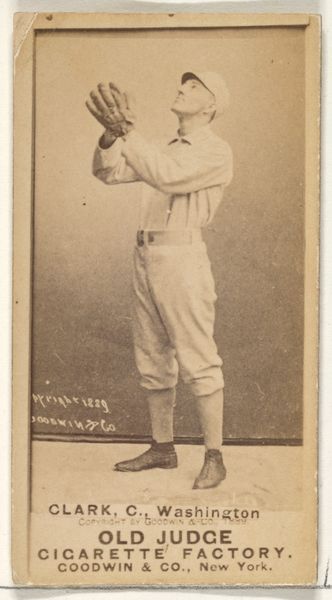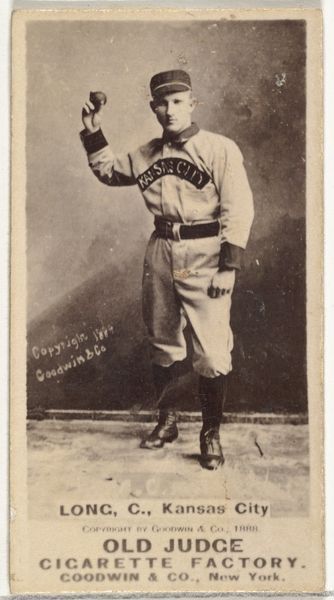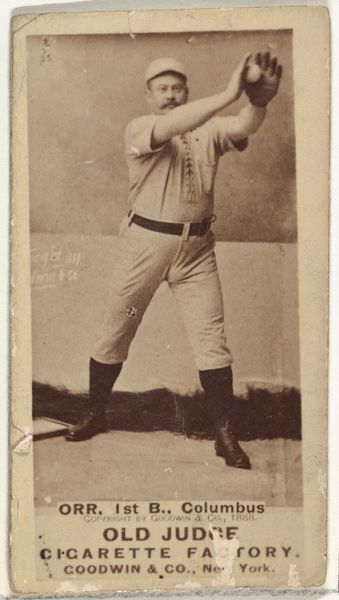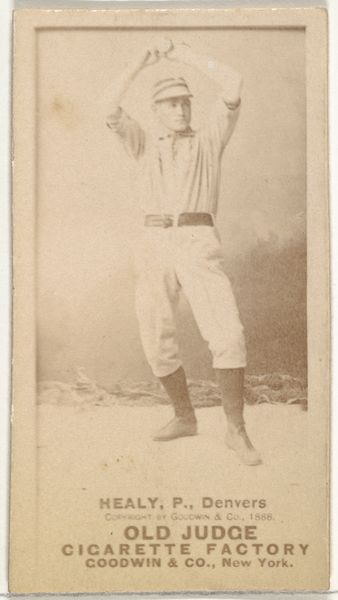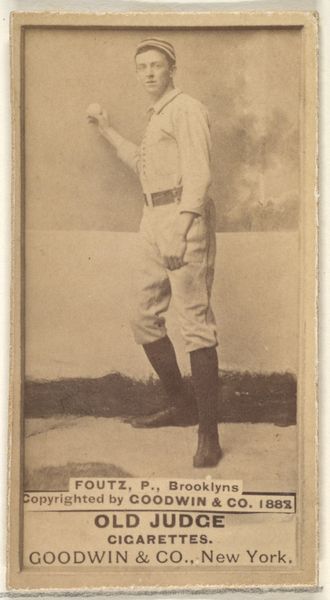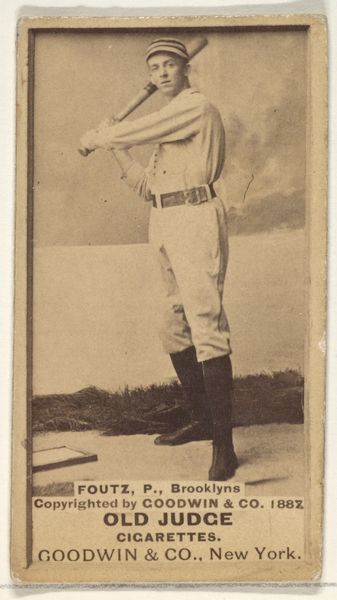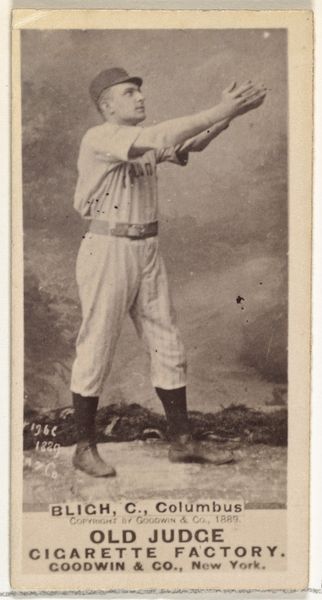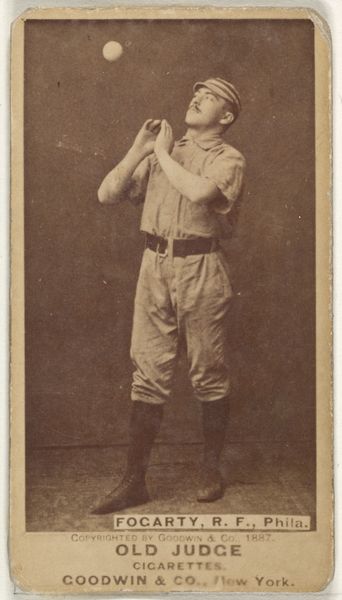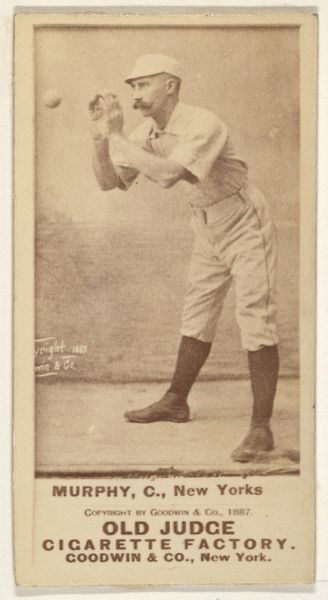
Emery J. "Moxie" Hengel, 2nd Base, Minneapolis, from the Old Judge series (N172) for Old Judge Cigarettes 1888
0:00
0:00
drawing, print, photography
#
portrait
#
drawing
# print
#
baseball
#
photography
#
19th century
#
men
#
athlete
Dimensions: sheet: 2 11/16 x 1 3/8 in. (6.9 x 3.5 cm)
Copyright: Public Domain
Curator: This captivating vintage card features Emery J. "Moxie" Hengel, the second baseman for Minneapolis. The photograph, part of the "Old Judge" series (N172), dates back to 1888. It's fascinating how Goodwin & Company originally created it as an advertising tool for Old Judge Cigarettes. Editor: It has such a quiet stillness about it, even though it's an image of an athlete. The muted sepia tones lend it an almost dreamlike quality. You can almost imagine the dust of the baseball field settling in the air. Curator: Indeed, the Old Judge series highlights how sporting imagery began permeating popular culture. In a time defined by rapid industrialization, the growing commercial appeal of baseball offered a particularly fascinating intersection with the emerging culture of mass media. Think about how many new Americans this helped to engage with their adopted homeland and traditions. Editor: Absolutely. Beyond the advertisement, it also captures the romanticized vision of masculinity popular during the late 19th century. Hengel's stance, gaze, even the way he holds his glove project this air of stoicism and controlled athleticism, while his ethnicity has almost been erased as white. The card suggests what the ideal American should be: a fit, capable sportsman embodying resilience and vigor. How do you see ideas around masculinity here? Curator: Precisely! Moreover, these cards became immensely collectible, marking one of the early examples of commercial memorabilia driving fandom. The company used this to capitalize on a market eager for images of their athletic heroes; it’s a business model still quite prevalent today, obviously. Editor: Yes. It does make you consider the power dynamics inherent in image creation and distribution. Who gets to be represented and how, is critical, given what was then becoming increasingly normalized in visual terms through things like mass-produced cards and photography. Curator: Precisely. These pieces show how popular imagery informs identity, aspiration, and ultimately social expectations and the economic engine in which this revolves. Editor: A compelling insight that reframes how we might consider the history of sport, representation and identity and all within a humble baseball card!
Comments
No comments
Be the first to comment and join the conversation on the ultimate creative platform.
